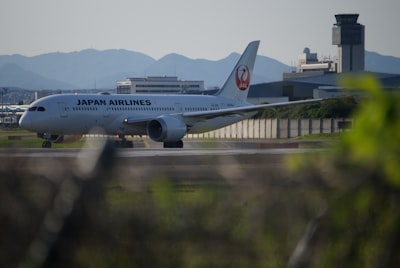China-Japan Relations: A Delicate Balance Amid Expo 2025 and Military Tensions
The world’s attention turned to Osaka as Chinese Vice Premier He Lifeng’s high-profile visit to Expo 2025 sought to showcase cultural goodwill between China and Japan. Yet, beyond the pageantry of dragon dances and diplomatic speeches, a parallel narrative unfolded—the People’s Liberation Army (PLA) conducting bomber flights over the East China Sea. This juxtaposition highlights the intricate dance between soft power and hard power in modern international relations.
Expo 2025 Osaka: Platform for Diplomatic Engagement
Expo 2025 Osaka has become more than a celebration of innovation and culture—it’s a stage where nations shape perceptions and reset relations. China's “National Day” event, attended by Vice Premier He Lifeng, underscored the country’s intent to reinforce historical and cultural affinities with Japan. The repeated rhetoric about 2,000 years of friendship aims to remind audiences of shared roots and the mutual benefits of cooperation.
Key search trends: "China Japan Expo 2025 relations," "Chinese diplomacy in Japan," "Expo 2025 Osaka news"
PLA Flights: A Counter-Message in the East China Sea
Coinciding with this diplomatic charm offensive, the PLA’s bomber flights near the disputed East China Sea added a layer of complexity. These maneuvers are not uncommon, but their timing casts a long shadow. For many observers, the question arises: Is China sending mixed signals, or are military actions a calculated counterbalance to public displays of friendship?
Emerging issues:
- Territorial disputes in the East China Sea
- Japan's response to Chinese military actions
- Impact of geopolitics on economic and cultural exchanges
How Do Cultural Events Offset Security Concerns?
Public diplomacy and military posturing are often at odds. Major international events like Expo 2025 provide opportunities for nations to engage in soft power strategies, projecting a positive image, fostering tourism, and building people-to-people connections. However, security incidents or displays of force can undermine these efforts, highlighting the fragility of diplomatic progress.
Common search queries:
- Can cultural diplomacy ease military tensions?
- How does Expo 2025 influence Asia-Pacific relations?
- What is China’s approach to balancing diplomacy and security?
A Comparison: Soft Power vs. Hard Power in East Asian Relations
In recent years, both China and Japan have invested heavily in soft power—through cultural exports, international partnerships, and economic ties. But hard power dynamics, especially in contested maritime areas, remain a persistent point of friction. Understanding the interplay between these forces is crucial to predicting future trends in East Asian geopolitics.
Looking Ahead: Opportunities and Risks in China-Japan Engagement
The events in Osaka underscore the enduring give-and-take between diplomacy and deterrence. As global eyes watch for signs of genuine rapproachment or deepening rivalry, both sides face a question: Will cultural gestures overcome strategic suspicions?
Takeaways:
- Diplomatic events like Expo 2025 serve as valuable tools for engagement, but cannot alone resolve security concerns.
- Mixed signals—such as simultaneous cultural outreach and military activities—complicate trust-building efforts.
- Watching future trends in China-Japan relations means tracking both the headlines and the subtext.
FAQ: China-Japan Relations and Regional Security
Q: What are the main territorial disputes between China and Japan?
A: The most prominent is the dispute over the Senkaku/Diaoyu Islands in the East China Sea.
Q: Why is Expo 2025 significant for Chinese diplomacy?
A: Major expos are global stages where soft power can be exercised, helping to reset or improve bilateral ties.
Q: How does Japan typically respond to Chinese military maneuvers?
A: Japan often issues official protests and scrambles Self-Defense Forces aircraft to monitor or intercept Chinese movements.
For more in-depth analysis, explore Nikkei Asia or check official Japanese Ministry of Foreign Affairs updates on regional developments.
Conclusion: China and Japan’s evolving relationship is a case study in the interplay between soft and hard power. While cultural diplomacy seeks to bridge gaps, the persistence of military tension cannot be ignored. Observers and policymakers alike should watch how these dual tracks develop in the months following Expo 2025, as each could chart the course for regional stability or renewed rivalry.

Comments
No comments yet. Be the first to comment!